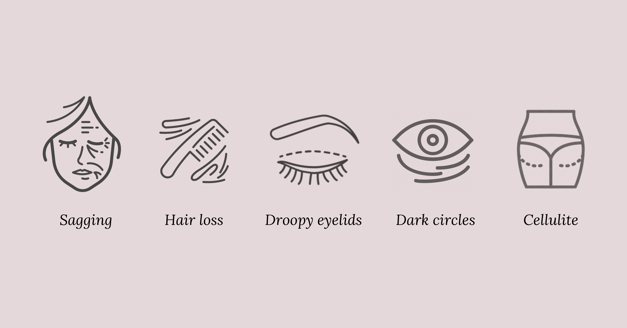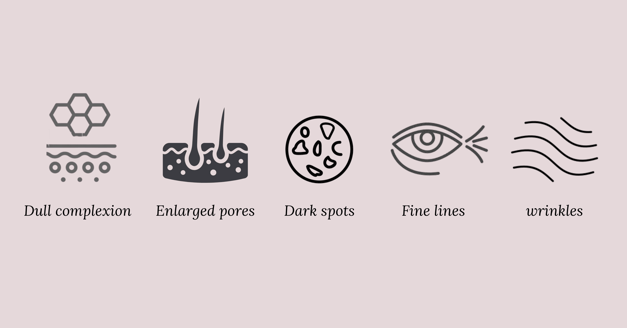From puberty to pregnancy to menopause, our skin undergoes a lot of changes as we transition through life’s testing stages. Understanding the various life stages that are unique to women are especially important to know exactly what the skin needs, and to choose skincare products and treatments best suited to those needs.
Related: How to Prevent Aging in Today’s World of Innovative Beauty Technology
Teenage years to early 20’s
At puberty, our oil glands go into overdrive with excess hormones, becoming enlarged and producing too much sebum. This causes the pores to become blocked, which may result in the confidence-killing condition of acne. Acne breakouts commonly form on the face, shoulders, chest and back, and can last into middle-age and beyond for some women. The first signs of skin aging usually occur around the age of 25, appearing in the form of fine lines around the eyes and expression lines around the mouth. This is also the stage where collagen begins depleting and the skin barrier weakens with continued sun exposure, so make sure to wear broad-spectrum sunscreen daily and re-apply every 3-4 hours.
During pregnancy
During pregnancy, women often experience skin changes caused by excess hormones, which increase melanin production. Coupled with a higher sensitivity to sunlight, pregnant women may notice the presence of melasma, or “the mask of pregnancy”, which appears as a dark, blotchy facial pigmentation that can also occur on the arms and neck. During pregnancy, it is advised to wear sunscreen with both UVA and UVB protection with SPF50. Additionally, pregnant women will experience excess oil secretion on the skin, which can lead to breakouts especially around the chin, jawline, and cheeks. Skin becomes mores sensitive during pregnancy, so avoid acne remedies such as retinol or salicylic acid, and opt instead for simple, fragrance-free daily cleansers and moisturizers, or products containing azelaic acid to reduce post-acne blemishes and discolorations.

40’s, late 50’s and menopause
Throughout your 40’s and 50’s, skin structure naturally changes as collagen production continues to degrade at 1% every year. The top layers of skin become noticeably thinner, and age spots (hyperpigmentation) begin to appear as skin becomes more sensitive to UV rays. A loss of volume is associated with the loss of fibrous structure in the connective tissue of the dermis, which can also contribute to deep wrinkles. A few recommended beauty devices to combat these signs of aging include Radiofrequency (RF) and HIFU (High Intensity Focused Ultrasound) to restore volume, smooth over fine lines and lift sagging skin.

Related: How to Look Younger: the Art of Aging Gracefully
As menopause approaches, estrogen levels begin to decline, which in turn slows down the body’s oil and collagen production. This results in a parched, flaky skin that can cause intense itching in some women. Age spots, melasma and hair loss are also common symptoms of menopause.
Whether through innovative beauty technologies or more traditional methods that have stood the test of time, there are infinite ways to take skincare and anti-aging into your own hands. While aging is inevitable, we’re here to help you transition through the life stages as “flawlessly” as possible and to avoid premature skin aging.
.png?width=180&height=80&name=imgpsh_fullsize_anim%20(1).png)

